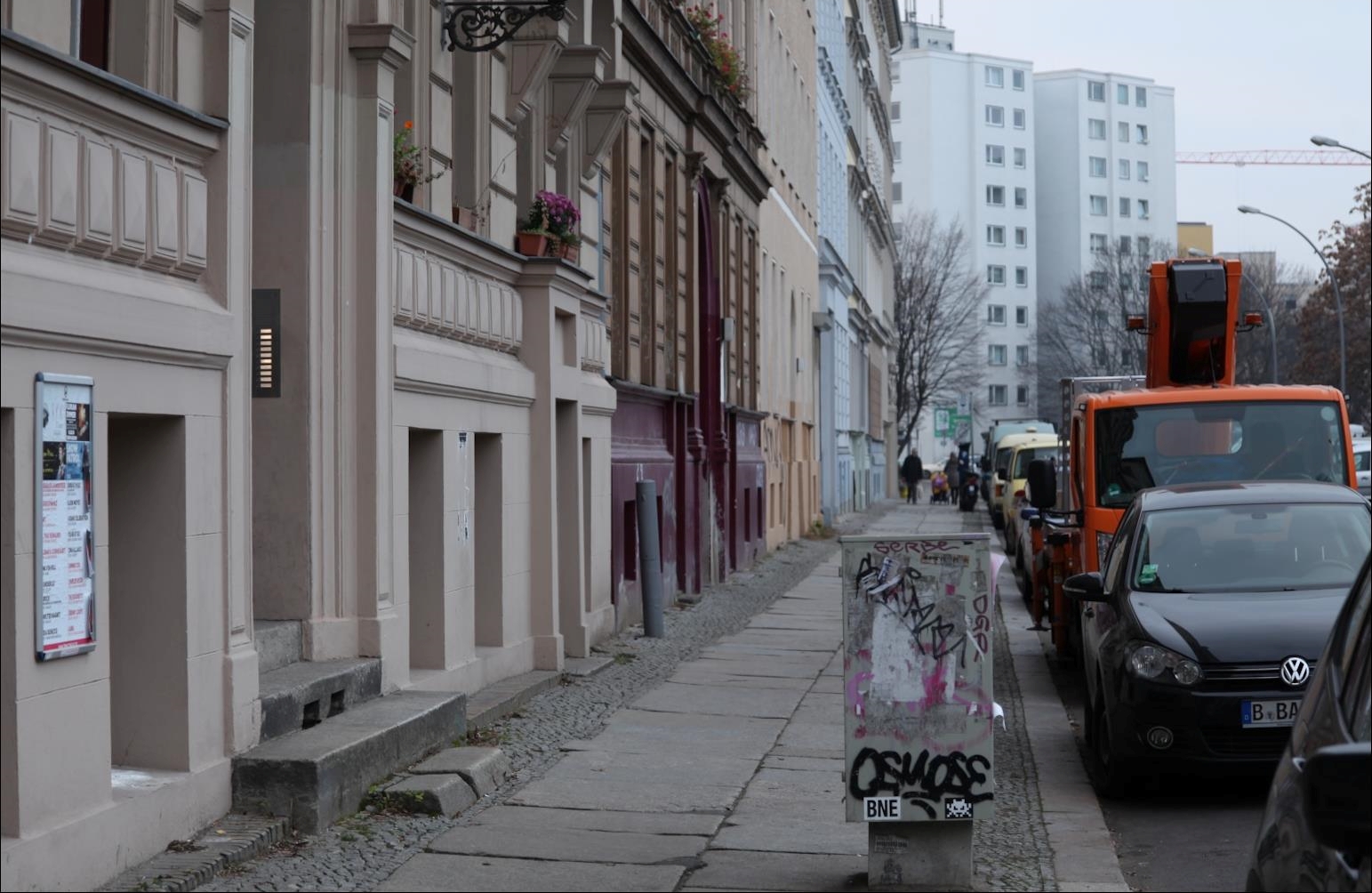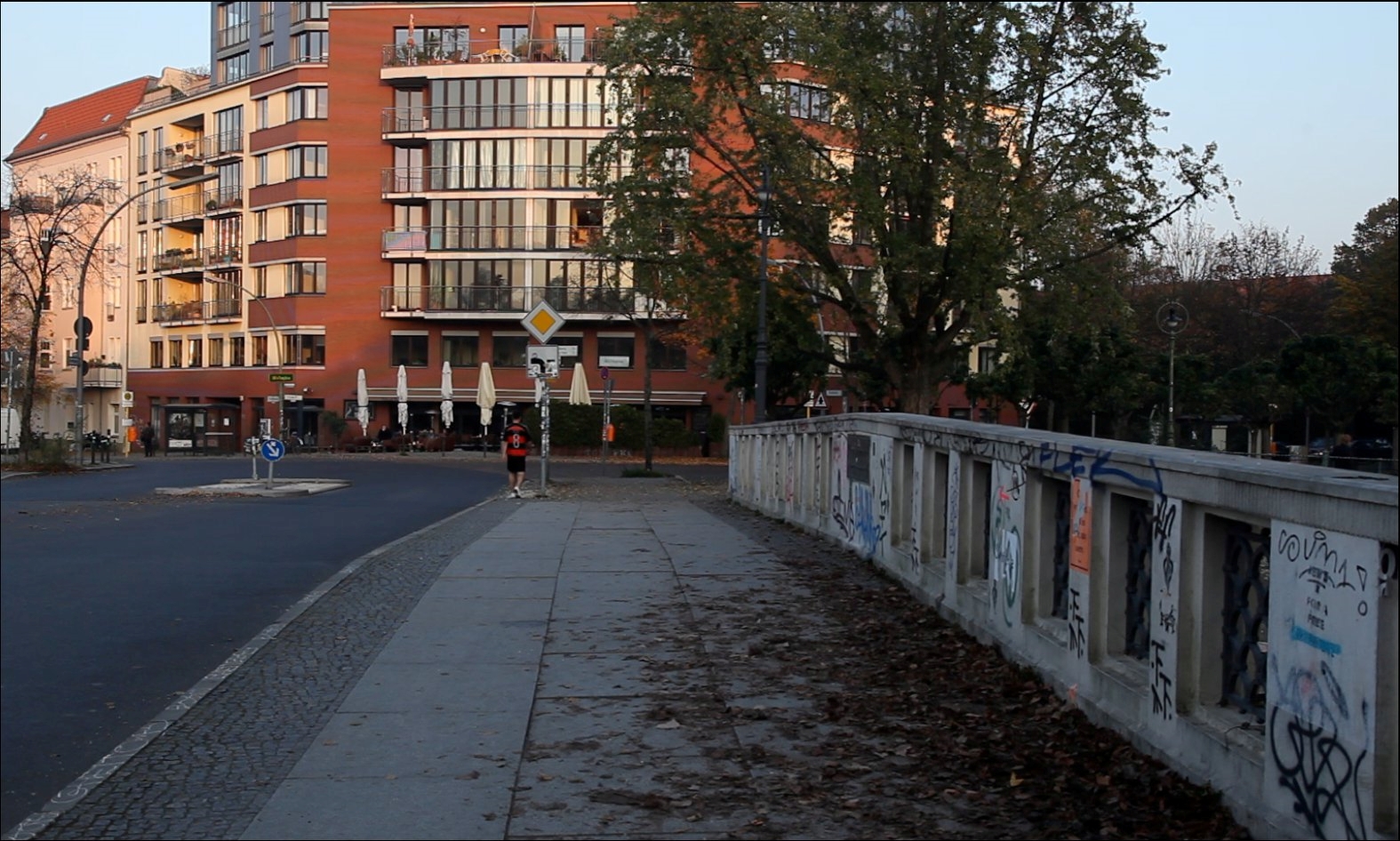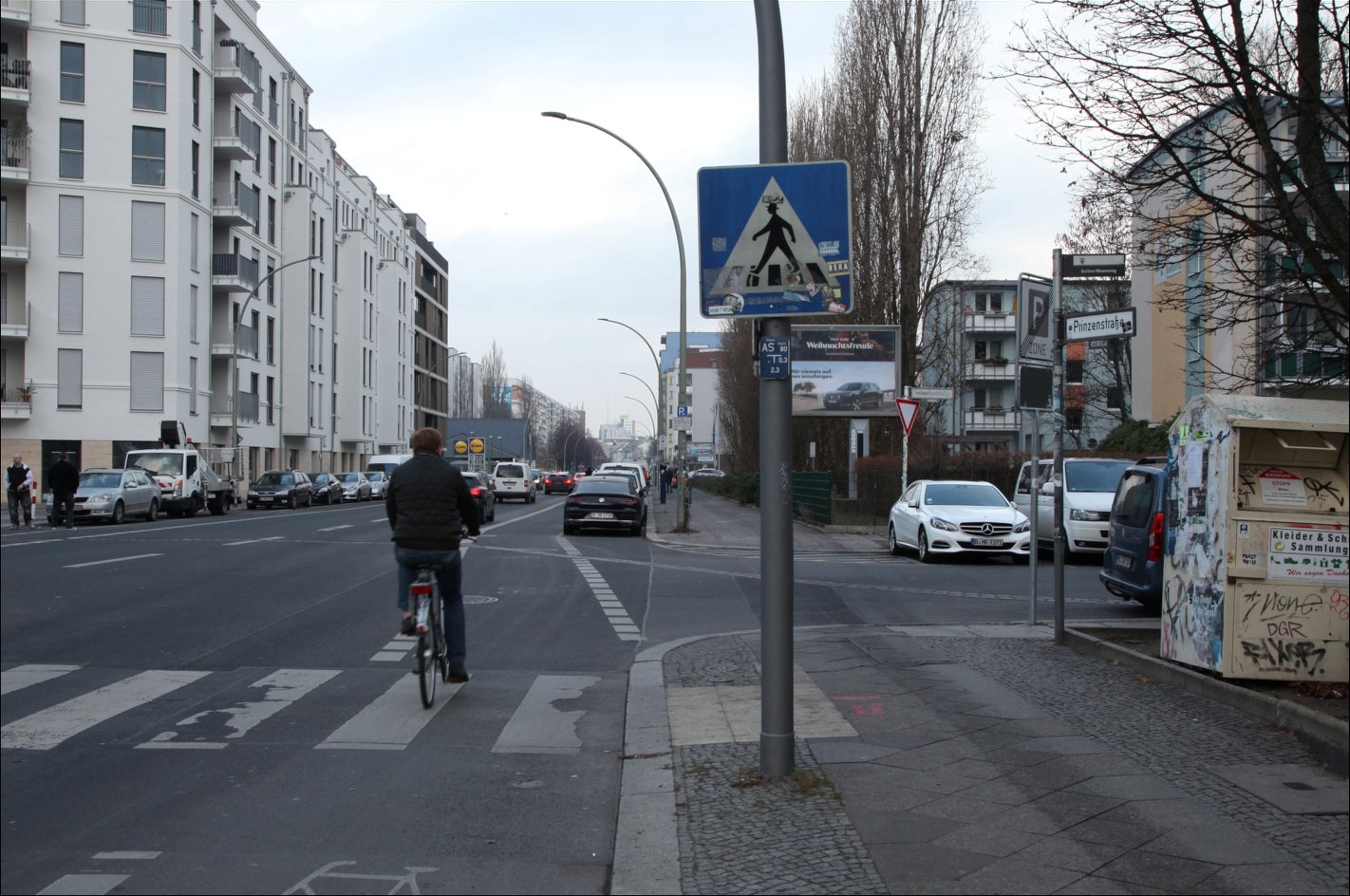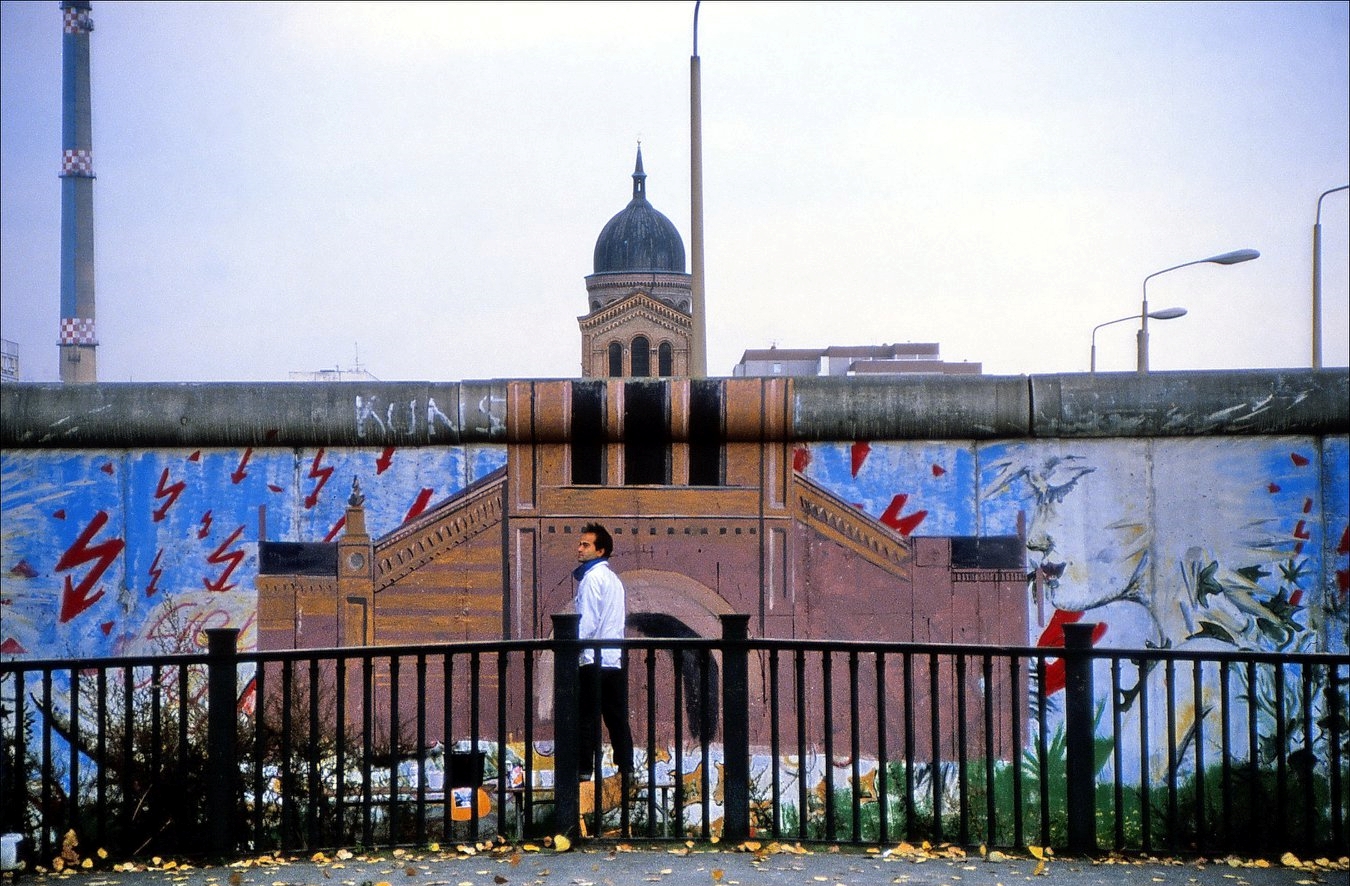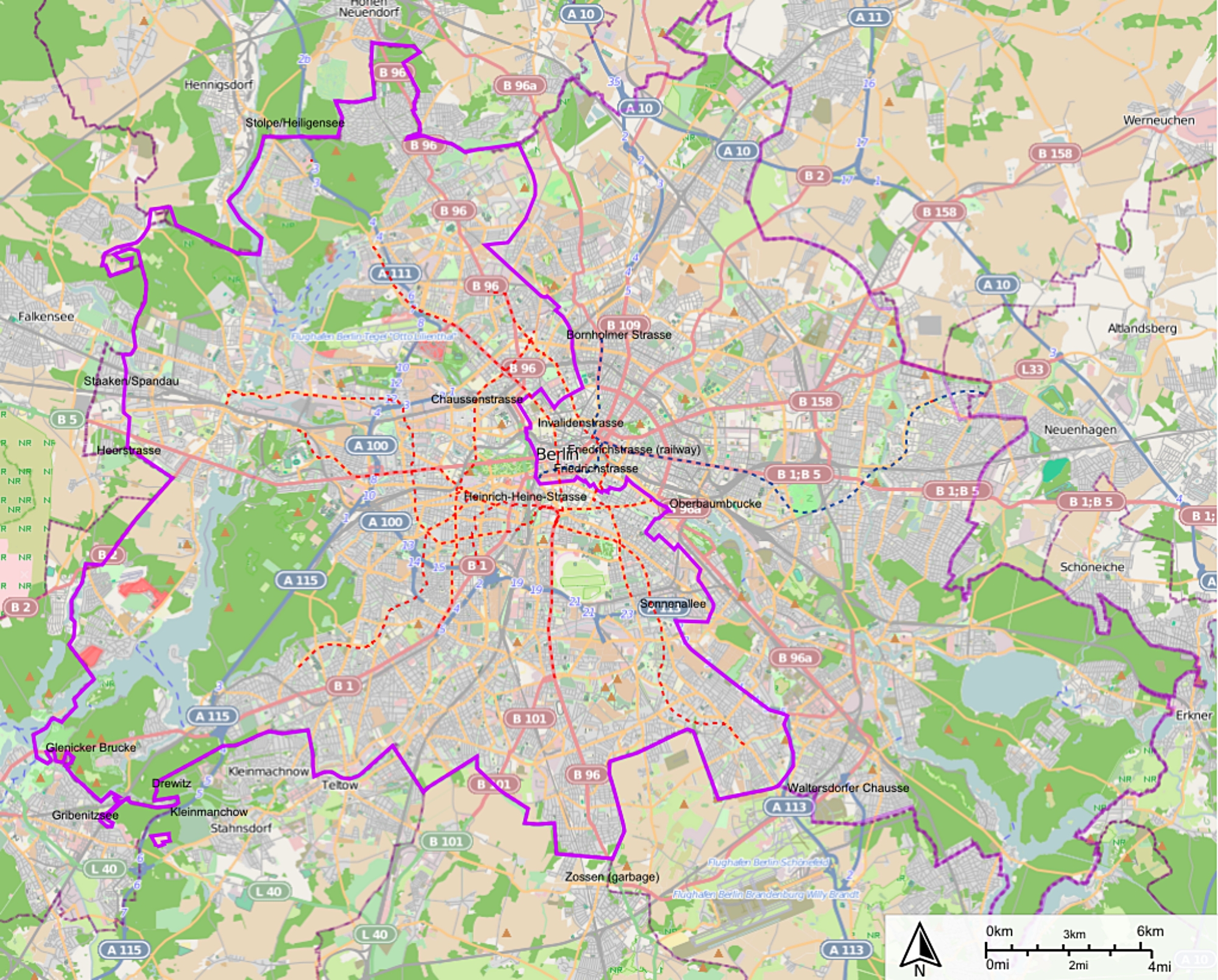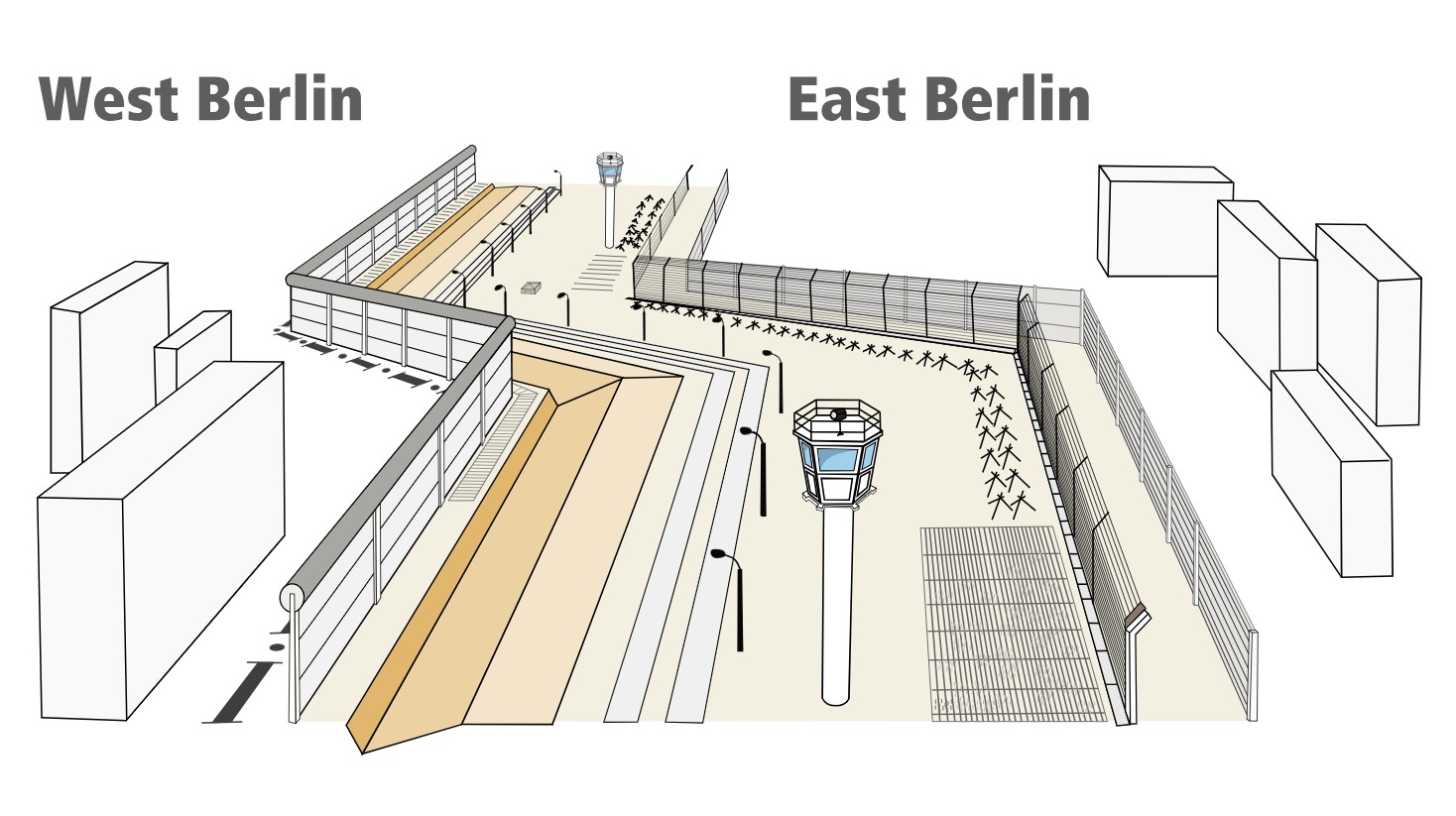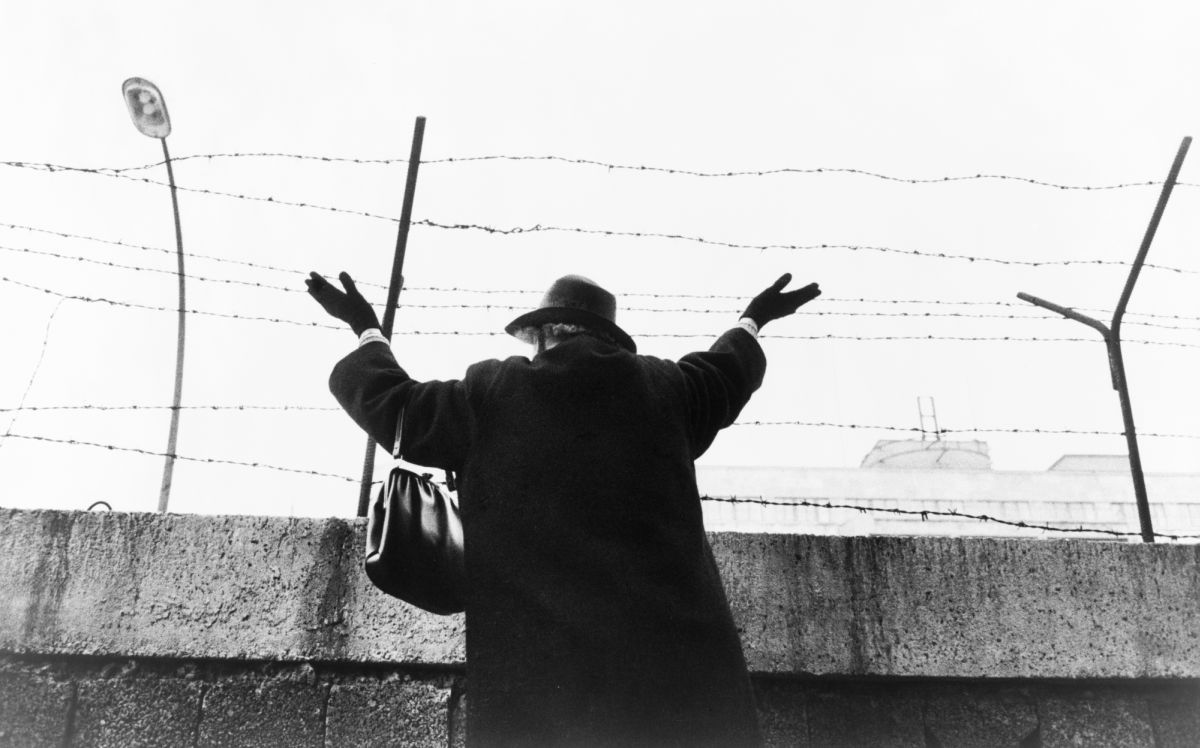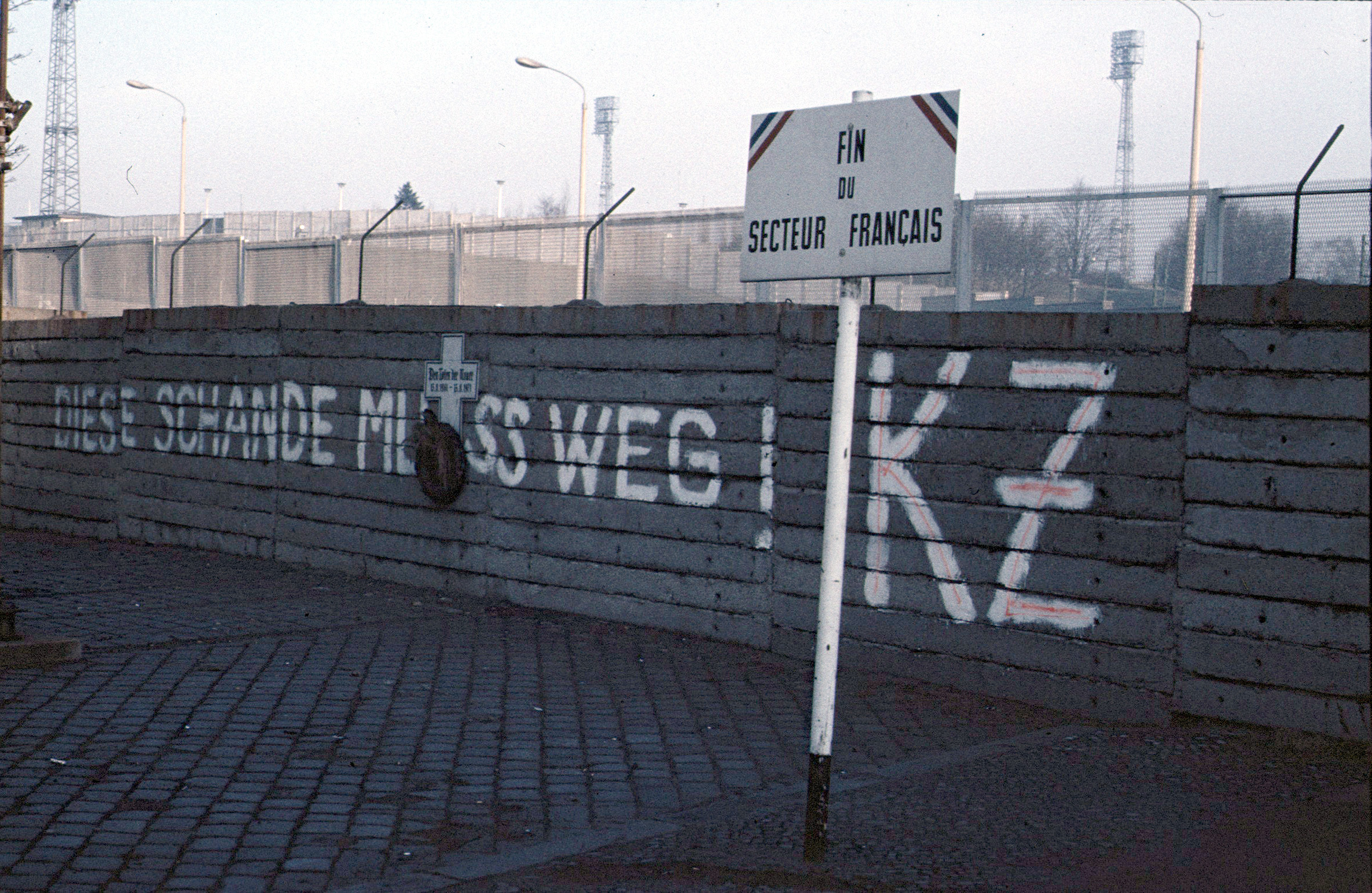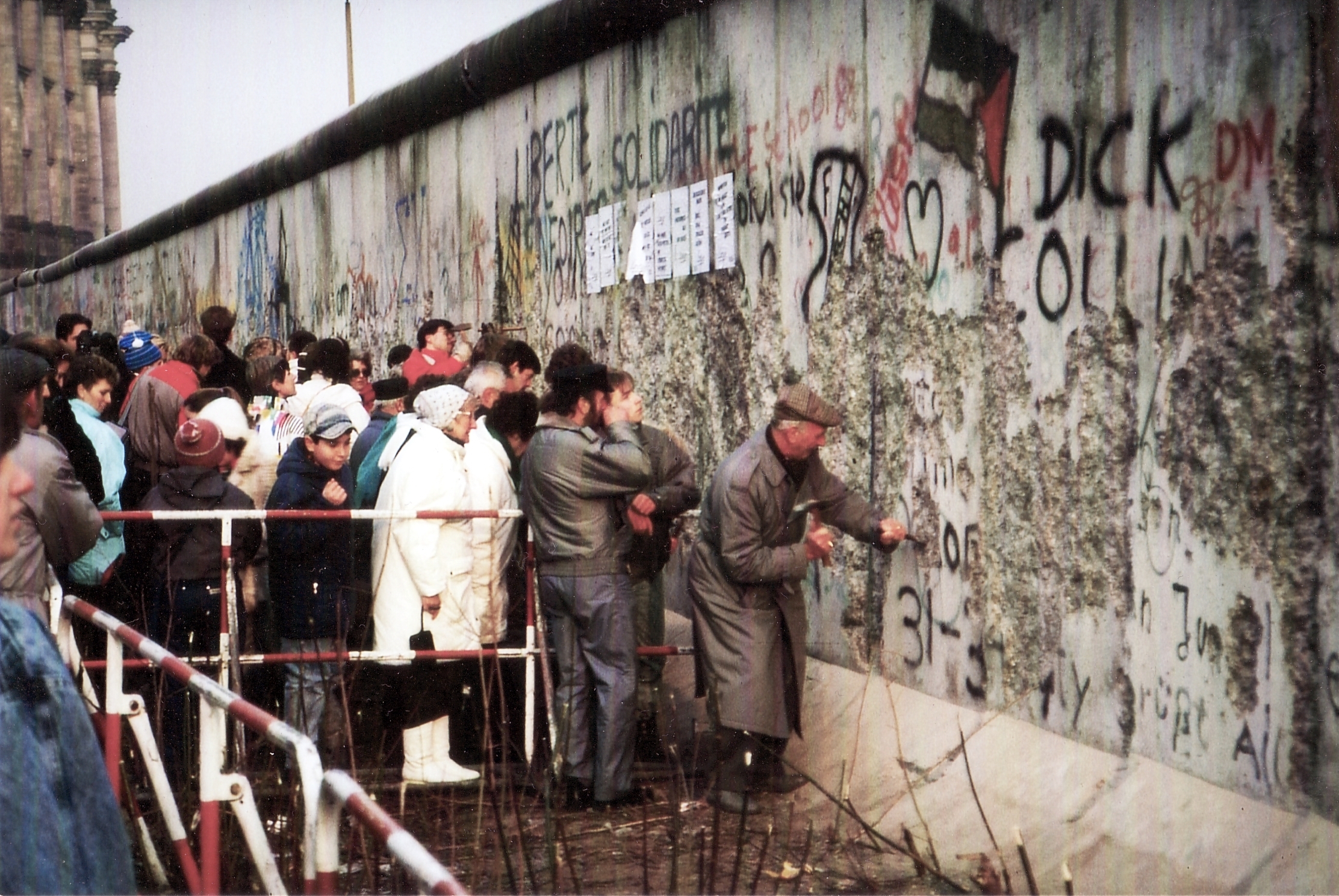The Berlin Wall (German: Berliner Mauer) brutally divided the German capital and the entire country for almost 30 years. This 156-kilometre-long system of fortifications was a symbol of the Iron Curtain and the Cold War. It was intended to prevent East Germans from leaving the country. Those who took the risk had to reckon with the possibility of being killed. The structure collapsed on 9 November 1989
The wall, which runs for about 43 km through Berlin and marks the more than 1,500 km long intra-German border, was built by the GDR authorities to stop mass migration to the West. During attempts to cross the guarded border into West Berlin, many refugees were killed. The exact number of victims is disputed and uncertain, with various sources claiming between 136 and 239 deaths. By the time of the peaceful revolution that brought down the wall in November 1989, some 71,000 GDR citizens had been sentenced to prison for attempting to flee
The photo was taken in 1986 by Thierry Noir at Bethaniendamm in Berlin-Kreuzberg. Source: Noir, CC BY-SA 3.0, via Wikimedia Commons
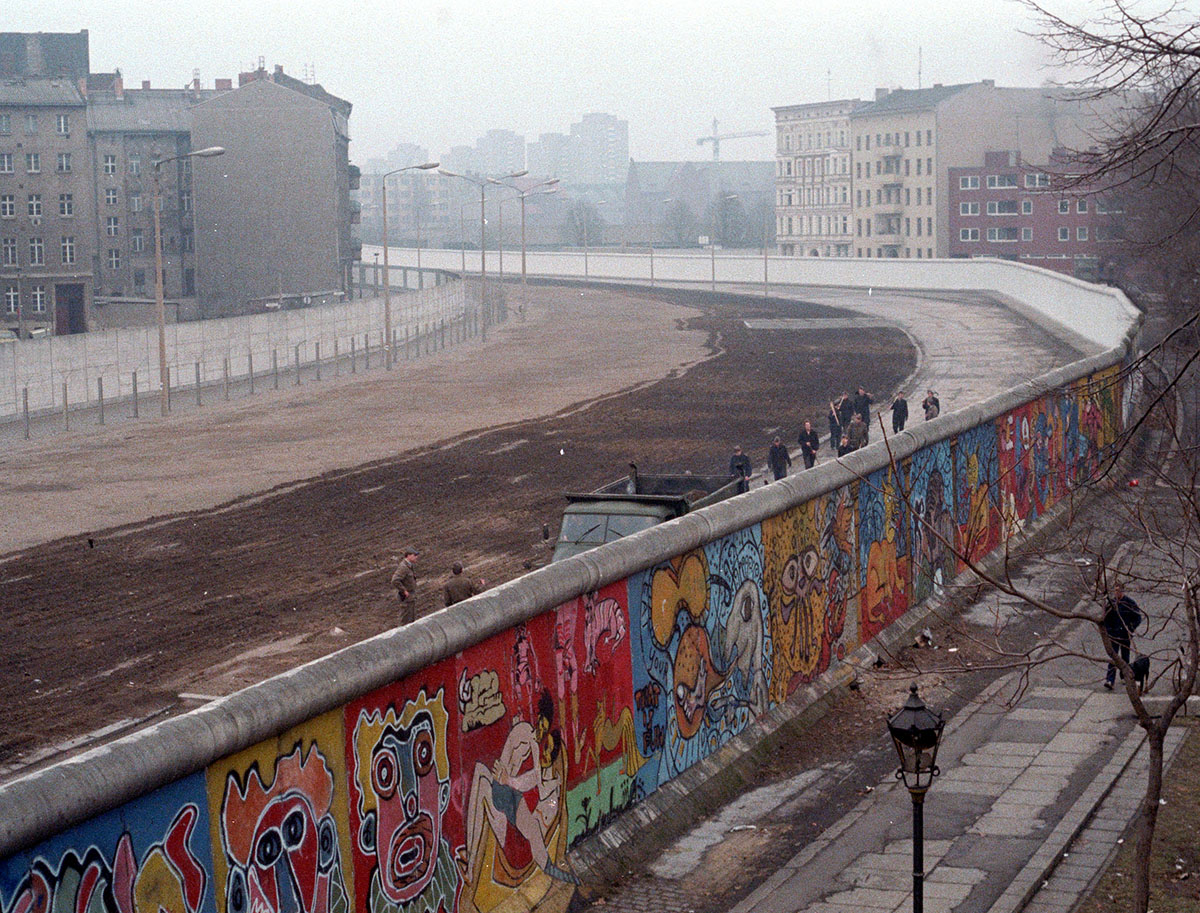
After the Second World War, the German state was divided into four occupation zones: the American, British, French and Soviet zones. A new state, the Federal Republic of Germany, was proclaimed in the areas that remained under the influence of Western forces. Soviet influence, on the other hand, sought to introduce people’s democracy and contributed to the creation of the German Democratic Republic. It was at this time that Berlin was also divided. Of the four parts of the city, the eastern districts remained under Soviet influence, while the other three parts, as West Berlin, gained the status of a special area administered by the Western Allies. Walter Ulbricht, who had ruled the GDR undivided since the 1940s, was looking for a way to stop the mass escapes to West Germany. Their reason was the poor living conditions. In the end, in agreement with the Soviet authorities, he decided to solve the issue by force. It was decided to seal the weak point, the border between East and West Berlin, with a wall. Work began on the night of 12-13 August 1961. Some 150 tonnes of barbed wire were used to implement the first phase of the plan in a city plunged into darkness (the streetlights were switched off for convenience), which was stretched across the border. A total of 193 streets, 68 border crossings and 12 railway stations were closed. The tracks were disconnected. Only trains running through Friedrichstraße station stopped at the border crossing organised there. Operation Rose, which was carried out in a flash, was a complete success. In this way, parents and children were separated, loving people were separated
1976 and 2018 – Sebastianstraße © FHXB-MUSEUM / Jürgen Henschel, © Jo Furch CC BY-SA 3.0
1987 and 2018 – frame from the film “Der Himmel über Berlin” © Wim Wenders Stiftung, © Jo Furch CC BY-SA 3.0
1979 and 2018 – Berlin Wall in front of the Brandenburg Gate © Chris John Dewitt, © Jo Furch CC BY-NC-SA 4.0
1985 and 2018 – wall in Kreuzberg district © Chris John Dewitt, © Jo Furch CC BY-NC-SA 4.0
1989 and 2019 – wall in front of the Brandenburg Gate © Frederik Ramm, © Jo Furch CC BY-SA 3.0
Initially, fences were built or entrances to residential houses were walled off. During the construction of the wall there were still escape attempts, including through windows from houses standing on the border. Soon the windows of these houses were also bricked up and, after the forced relocation of the inhabitants, the houses were demolished by blowing them up. In this way, the Church of Reconciliation in Bernauer Straße was also destroyed on 28 January 1985. The Berlin Wall consisted of 45,000 reinforced concrete slabs, topped by a ridge formed from a concrete pipe. The strip next to the wall, in some places 100 metres wide, was called the death zone. It was defended by 302 guard towers and at least 11 obstacles. These included wires that, if snagged, would launch light rockets, anti-tank barrages, barrier piles or boards with nails. The system was systematically expanded and improved over the following decades. These measures eventually led to an isthmus running through the once densely built-up areas of the city
1986 and 2018 – Berlin Wall in the Kreuzberg district © Chris John Dewitt, © Jo Furch CC BY-NC-SA 4.0
1986 and 2019 – corner of Heidelberger Straße and Elsenstraße © Chris John Dewitt, © Jo Furch CC BY-NC-SA 4.0
1983 and 2019 – wall in front of the Brandenburg Gate © Michael Fiegle, © Jo Furch CC BY-SA 3.0
1990 and 2019 – Onckenstraße © Chris John Dewitt, © Jo Furch CC BY-NC-SA 4.0
1987 and 2019 – Waldemarstraße © Dieter Palm, © Jo Furch CC BY-NC-SA 4.0
At the heart of the breakdown of the Berlin Wall were numerous demonstrations by East Berlin citizens demanding free travel to West Berlin. In addition, during the so-called Autumn of Nations in 1989, there were mass escapes of East German citizens to West Germany. on 13 June 1990, the official demolition of the wall began in Bernauer Straße. More than 300 East German border guards and, from 3 October 1990, 6,000 Bundeswehr sappers with heavy equipment also took part. The demolition of the wall dividing the city was officially completed on 30 November 1990. Six sections were left standing, which act as monuments. The rest of the defences, located mainly on the former border between West Berlin and Brandenburg, had disappeared by November 1991. The fall of the Berlin Wall marked the end of the division of Berlin and also the end of the four-decade-long division of Germany. The former border strip is still recognisable in many places, partly as large empty spaces in Bernauer Straße and along Kommandantenstraße, Alte Jakobstraße, Stallschreiberstraße, Alexandrinenstraße and Sebastianstraße. The wide strip that is a remnant of the inter-mural area is now known as the wall strip. In the densely built-up centre of Berlin, the strip was mainly used for urban purposes. New buildings were built there, but also car parks or even part of the motorway
1986 and 2019 – Taut-Haus on Engeldamm © Chris John Dewitt, © Jo Furch CC BY-NC-SA 4.0
1984 and 2019 – Checkpoint Charlie © Chris John Dewitt, © Jo Furch CC BY-NC-SA 4.0
1990 and 2019 – Berlin city centre © Chris John Dewitt, © Jo Furch CC BY-NC-SA 4.0
1989 and 2019 – Oberbaumbrücke © Roehrensee, © Jo Furch CC BY-SA 3.0
1985 and 2019 – Preußischer Landtag © Chris John Dewitt, © Jo Furch CC BY-NC-SA 4.0
1982 and 2019 – Lohmühlenstraße © popo.uw23, © Jo Furch CC BY-SA 3.0
Today, there are many memorials and museums in Berlin alone that recall the Berlin Wall and its history. Among the most well-known, in addition to the Berlin Wall Memorial, are the Berlin Wall Museum at Checkpoint Charlie on the site of the former border crossing, the East Side Gallery – a section of the wall about 1.3 km long covered with graffiti and paintings by more than 100 artists, the Berlin-Hohenschönhausen Memorial, which recalls the time when there was a detention centre there, and the Berliner Mauerweg – a hiking and cycling route along the former border fortifications. It is interesting to note that the largest collection of Berlin Wall fragments outside Berlin in the world is in Poland, more specifically in Sosnówka near Wrocław. On the estate of the Berlin dentist Ludwik Wasecki, there are 30 segments of the original wall with a total length of 50 metres. Fragments of the infamous construction can also be found in Gdańsk by the shipyard, as well as in Warsaw. On the 100th anniversary of the birth of John Paul II, one of the reinforced concrete slabs was donated to the museum named after him in Wilanów, and another four were incorporated into the Solidarity monument located at the junction of Świętokrzyska and Mikołaja Kopernika streets
Some fragments of the wall are now also located in other parts of the world. They can be seen in, among others, the Haus der Geschichte in Bonn and on Königinstraße in Munich’s English Garden. Others can be found in the Peace Museum in Caen, France, at the entrance to the basilica in Fátima, in the Imperial War Museum in London or in the Vatican Gardens
Source: tvn24.pl, polen.diplo.de
Read also: Metamorphosis | Urbanism | City | History | Berlin


